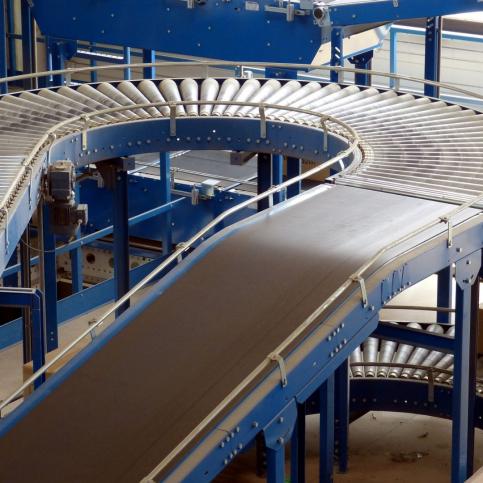Case conveyor systems are becoming increasingly popular in the modern manufacturing industry, allowing companies to better meet their production goals and stay ahead of the competition. But what is a case conveyor system and how can it benefit operations? In this blog post, the various aspects of case conveyor systems will be explored.
What is a case conveyor system?
A case conveyor system is a type of powered or non-powered conveyor that is used to move heavy or bulky items from one place to another. They can be used to move a variety of items, including boxes, containers, crates, and pallets. They are often used in warehouses and manufacturing facilities to move products from one area to another. Case conveyors can also be used in retail settings to move merchandise from the back room to the sales floor.
Types of case conveyor system
Gravity conveyor
Gravity conveyors are a form of case conveyors that are simple, economical and reliable. Gravity conveyor systems can be used for a wide variety of applications, including temporary or permanent installations. Gravity conveyors are available in a variety of widths, lengths and configurations.
Portable conveyor
Another form of case conveyor is a portable conveyor, that is, they can be easily moved from one location to another. They are often used in warehouses and factories where there is a need to frequently move materials. Portable conveyors are typically made of lightweight materials such as aluminum or steel, which makes them easy to maneuver. Some portable conveyors also collapse or fold up for easy storage when not in use.
Extendable conveyor
An extendable conveyor is a type of conveyor system that can be extended or retracted as needed. They are often used in warehouse and manufacturing settings to move materials from one area to another. Extendable conveyors can be either powered or gravity-fed, and they can be operated manually or automatically.
Benefits of case conveyor systems
Increased Automation
With the powered version of case conveyor systems, automation is definitely a major perk. Even with gravity-powered versions, the reduction in forklifts and manual labour is evident. For example, features like sorting and merging can be easily integrated with case conveyor systems, making them less prone to errors.
More Flexibility
Case conveyors offer many benefits over traditional methods of case transport, such as greater flexibility, higher speeds, and improved safety. Coming to flexibility, they are perfect to be used in distribution channels, or even as process buffers. Furthermore, they can be integrated with other technologies to improve throughput.
Specifications To Select A Case Conveyor System
When it comes to choosing a case conveyor system, there are a few key specifications that need to be taken into account. These are:
-Load-bearing capacity
-Accumulation logic
-Conveyor speed
-Case feet per minute (CFPM)
-Width
-Frame configuration
-Drive location
To know more about case conveyors and how they can contribute to the effective functioning of a conveyor system, reach out to us at Norpak Handling. We have been providing businesses throughout Canada with top-of-the-line general conveyors and equipment for decades. Get in touch with us today to learn more about how we can craft highly customized material-handling solutions specific to your requirements.










